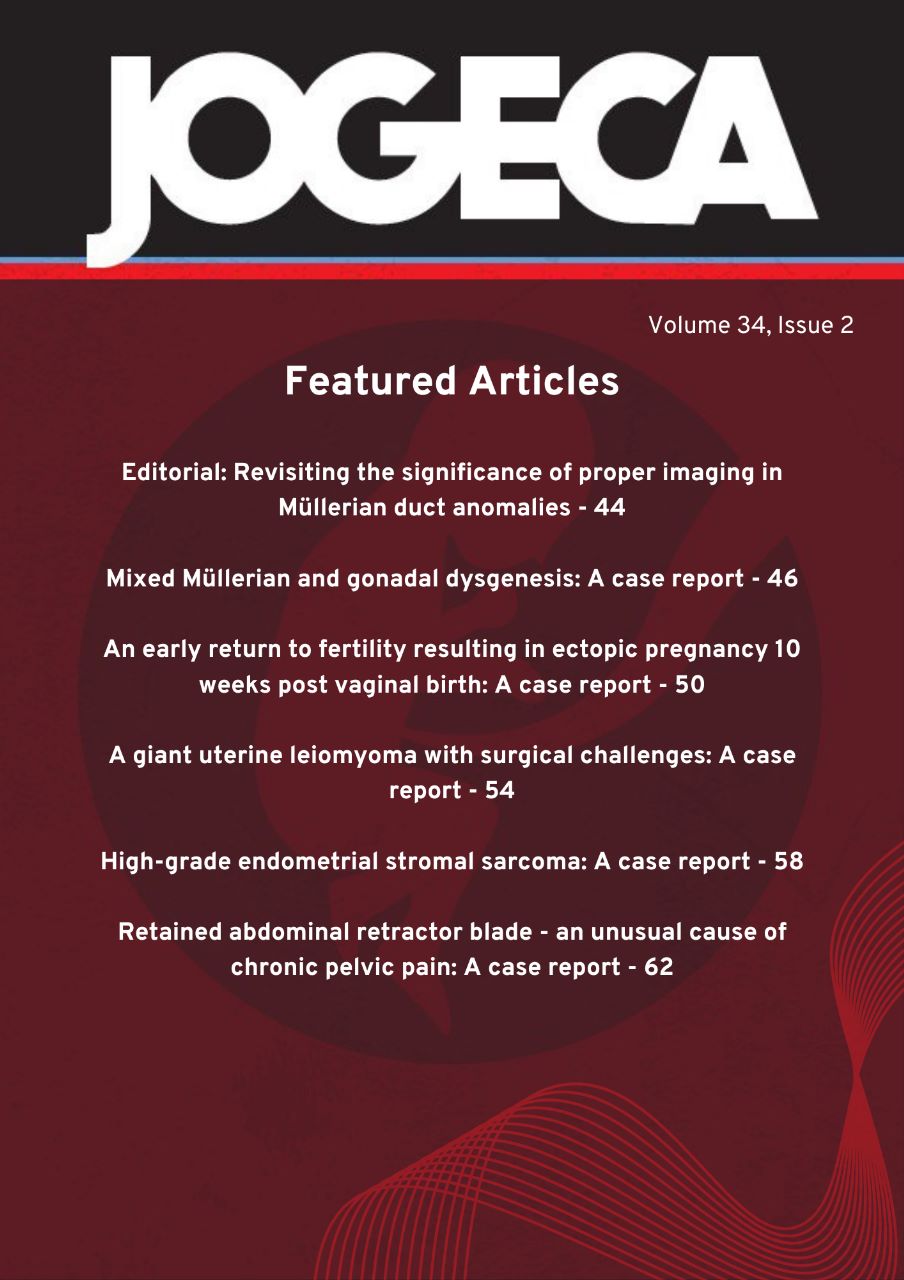LABORATORY FACTORS ASSOCIATED WITH MORTALITY AMONG PATIENTS WITH ECLAMPSIA AT THE KENYATTA NATIONAL HOSPITAL, NAIROBI, KENYA.
DOI:
https://doi.org/10.59692/jogeca.v30i2.354Keywords:
eclampsia, maternal mortality, Kenyatta National Hospital, Nairobi, Kenya, laboratory factorsAbstract
Background: Eclampsia contributes significantly to maternal and neonatal morbidity and mortality both locally and globally. Identifying risk factors for mortality in women with eclampsia at KNH would serve to try and ameliorate these catastrophic outcomes.
Objective: To determine and compare the laboratory findings associated with mortality in women managed for eclampsia at KNH between 2007 and 2014.
Design: A hospital-based case control study. Cases were women who were managed for eclampsia and died while controls were those who survived eclampsia.
Results: A total of 262 records of patients with eclampsia managed at KNH between 1st January 2007 and 31st December 2014 were retrieved. Compared to controls, cases were older and less educated. Patients aged above 34 years had significantly higher odds of death compared to those between 14 and 24 years (OR 4.03; 95% CI 1.70 - 9.56; p= 0.002). Normal haemoglobin levels offered some protection against death (OR 0.37; 95% CI 0.14 – 0.95, p= 0.116). High creatinine levels significantly increased the odds of death, (OR 7.30; 95% CI 2.50 – 21.4; p< 0.001). High aspartate transferase (AST) levels were significantly associated with death (OR 5.14; 95% CI 1.12 – 23.49, p= 0.005). There was no significant association between death and potassium levels, alanine transaminase levels (ALT), educational attainment or marital status.
Conclusion: Patients on management for eclampsia at KNH aged above 34 years with elevated AST and creatinine levels had increased risk of mortality.
Downloads
Published
How to Cite
Issue
Section
Categories
License
Copyright (c) 2018 Authors

This work is licensed under a Creative Commons Attribution 4.0 International License.




